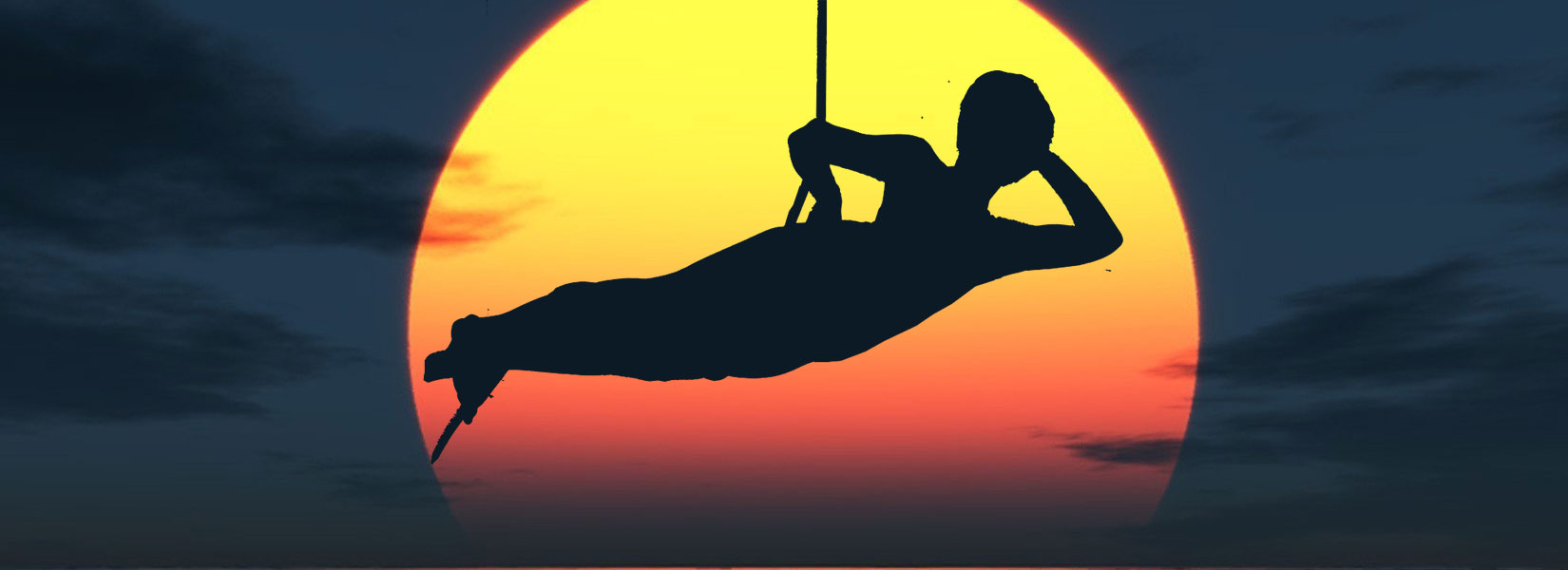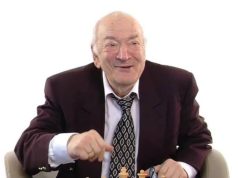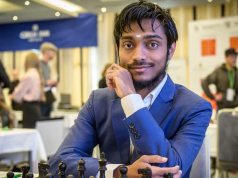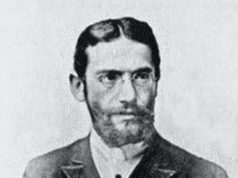Mallakhamb- a sport that is eternally Indian and one of the most indigenous. It is a sport whose history goes back to the regime of Peshwa Baaji Rao II when Marathas were going through a phase of utmost supremacy.
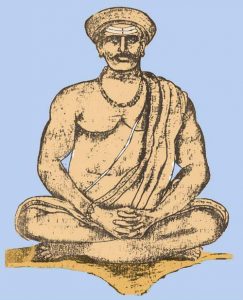
It was at that time two heavy-weight wrestlers, Ali and Gulab, from the court of Nizam of Hyderabad challenged the Maratha power. But, to everyone’s surprise, fifty-two noted court wrestlers of the Peshwa declined the challenge. Seeing his kingdom in crisis, a teenage boy of 17-18 years, Ballambhat Deodhar, accepted to fight against Ali and Gulab. But before the fight, Ballambhat went to Nasik for blessings from Goddess Saptasiringi. After 21 days of hard worship, the Goddess was pleased and gave him a boon that Lord Hanuman would come in his dream to guide him. And Lord Hanuman did appear in his dream continuously for three nights to demonstrate certain tricks of wrestling on a tree. An enlightened Ballambhat followed the instructions by constructing a wooden plank and practicing those special tricks. This gave him immense confidence and he returned to Pune ready for the fight. His first bout was with Ali. He defeated Ali so aggressively that Gulab ran away. After this victory, Ballambhat decided to spread this sport to different regions of the country. He named it Mallakhamb where Malla means ‘Wrestler’ and Khamba means ‘Pole’.
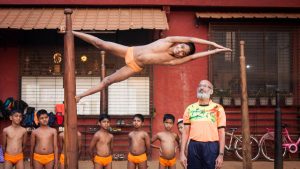
The heart of Mallakhamb is at Shivaji Park in Mumbai. At one corner of Shivaji Park lies the Samarth Vyayam Mandir where the legendary master Uday Deshpande has dedicated 42 years of his life in practicing and promoting Mallakhamb. Under his able guidance, Samarth Vyayam Mandir has produced more than 100 national champions. With the birth of Mallakhamb Federation of India, this sport has extended to other parts of India especially Madhya Pradesh, Gujarat, Tamil Nadu, Kerala and Orissa. The team under Uday Deshpande has also demonstrated Mallakhamb in United Kingdom, Czech Republic, Italy and United States of America. But it has become most acceptable in Germany. There are many exchange programmes that has further helped to spread this sport internationally.
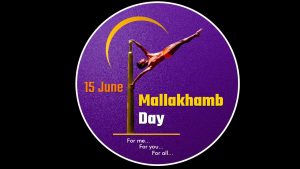 Thus to commemorate this growth, though after much toil and hardships, various national and international Federations came together to declare a day to celebrate this unique sport. 15th June is recognized as Mallakhamb Day that is celebrated worldwide with the motto, “For You, For Me, For All.”
Thus to commemorate this growth, though after much toil and hardships, various national and international Federations came together to declare a day to celebrate this unique sport. 15th June is recognized as Mallakhamb Day that is celebrated worldwide with the motto, “For You, For Me, For All.”
Let us look at the chronicle of some highlighted moments of this sport in India.
1936– Demostrations of Pole, Hanging Cane and Chimani (Bottle) Mallakhamb were performed at Berlin Olympics. It was very much appreciated by the German Supremo Hitler who presented all participants with an Appreciation Certificate, gold medal and a special Hitler medal.
1958– The Gymnastics Federation of India proposed to recognize Mallakhamb as competitive sport at the National Gynmnastics Championship held at Pahadganj Stadium, Delhi.
1962– The first National Mallakhamb Championship at Gwalior, Madhya Pradesh conducted by Gymnastics Federation of India.
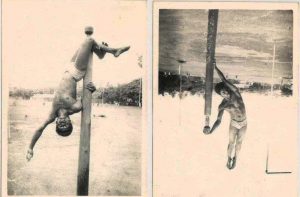
1976– The National Mallakhamb Championships held at Agartala in Tripura in May. The team from Mumbai had to travel for 7 days to reach Agartala. The journey route was Mumbai to Lucknow, Lucknow to Guwahati, Guwahati to Lamding, Lamding to Dharamnagar with change of train at every point. From Dharamnagar it was a 120hr bus journey to Agartala. But after the competitors arrived at the venue, it was found that Mallakhamb was not available there. The Mallakhamb was manufactured in one day and competitions were conducted. Dattaram Dudam won gold medal and emerged as National Champion.
1977– Gymnastics Federation of India stopped conducting National Mallakhamb Championships due to declaration of ‘One Game, One Federation’ policy by the Indian government. No National Championships were conducted from 1977 to 1980.
1981– Mallakhamb enthusiasts from Ujjain came together to form Mallakhamb Federation of India. A National level Invitational Mallakhamb tournament was organized by New Sports Association at Maharajwada High School in Ujjain on 28thand 29th January. A total of 12 teams with 48 players participated. The competition was only for Men and only in two age groups, under 20 and above 20 years. Later, this tournament was termed as the first National Mallakhamb Championships.
1982– The second National Mallakhamb Championships was held at Achyutanand Prasadik Jivajirao Vyayamshala, Ujjain on 6th & 7th February. It was conducted in 2 age groups, under 20 years and above 20 years and for Men only. The teams from Maharashtra, MP and UP participated in this competition.
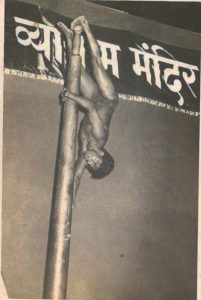
1983– The third National Mallakhamb Championships was held at Shree Samartha Vyayam Mandir in Mumbai on 28th & 29th February. The number of participating teams increased from 3 to 8 with a total of 86 participants. The teams were from Maharashtra, Andhra Pradesh, Manipur, Gujarat, Bihar, Karnataka, Madhya Pradesh and Uttar Pradesh. Rolling trophies for the winning teams were introduced for the first time. In this championship, for the first time in the history of Mallakhamb, Pole and Rope were placed on two separate podiums.
1984– The fourth Mallakhamb National Championships were held at Jummadada Vyayam Mandirin Baroda on 25th to 27th January. For the first time, competition was held for Boys and Men in 4 age groups- under 12, under 14, under 18 and above 18. It was also for the first time that competition for Girls was declared. Dattaram Dudam performed a double back somersault dismount from the Pole Mallakhamb, winning the National Championship 5th time consecutively. No one till date has performed such a dismount. He got the Gold Medal representing Gujrat and not Maharashtra.
1985– The fifth National Mallakhamb Chamionships were held at Laxmi Vyayam Mandir in Jhansi from 5th to 7th December. For the first time the competition was held in all 4 age groups of Boys and Girls. An interesting anecdote is that the circular informing the final dates of Nationals did not reach Uttar Pradesh Mallakhamb Association. As the teams started arriving Jhansi, the organizers realized that the Nationals were to be conducted. But in spite of this last moment demand, the organizers rose to the challenge and the Nationals got conducted successfully.
1990– In the 8th National Mallakhamb Championships at Maharashtriya Mandal in Pune on 28th to 30th December, for the first time there were 6 teams in all the 4 age groups of Men. There were 171 players in total, the highest in a national championship.
1991– In the ninth National Mallakhamb Championships, rolling trophies in all the age groups of Women were introduced during this Competition.
1996– A letter dated 9th February, 1996 was received from Ministry of Human Resource Development, Department of Youth Affairs and Sports, Government of India, which said that the Mallakhamb Federation of India was recognized, but without any financial assistance. Another letter was received soon from Ministry of Railways granting Rail Travel Concession to the players and officials for participation in Mallakhamb Championships.
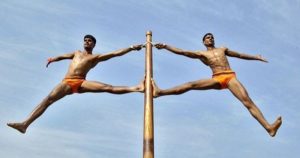 1996– In the thirteenth National Mallakhamb Championships held at Shree Samartha Vyayam Mandir in Mumbai from 28th to 31st March created a landmark in organization of Mallakhamb competitions. This is the only competition during which all the first three Individual winners, in all the age groups, were given medals of 23 carat gold. The silver and bronze medalists were given these gold medals with silver and bronze plating. The Mallakhamb demonstration given by the Visually Challenged girls of Kamala Mehta School and Boys from the Victoria Memorial School was another highlight. It also had the highest participation. 14 states participated, with 222 players. For the first time the number of players crossed 200. Maharashtra continued domination by winning 38 of total 66 medals.
1996– In the thirteenth National Mallakhamb Championships held at Shree Samartha Vyayam Mandir in Mumbai from 28th to 31st March created a landmark in organization of Mallakhamb competitions. This is the only competition during which all the first three Individual winners, in all the age groups, were given medals of 23 carat gold. The silver and bronze medalists were given these gold medals with silver and bronze plating. The Mallakhamb demonstration given by the Visually Challenged girls of Kamala Mehta School and Boys from the Victoria Memorial School was another highlight. It also had the highest participation. 14 states participated, with 222 players. For the first time the number of players crossed 200. Maharashtra continued domination by winning 38 of total 66 medals.
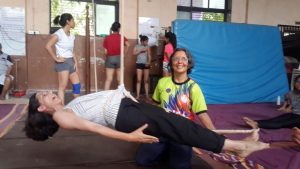
2000– In the eighteenth National Mallkahmb Championships held at Sree Laxmi Vyayam Mandir in Jahnsi, individual Championship in above 18 Men went to Shailesh Sehgal of Jhansi. He also won the individual championship in Hanging Mallakhamb. But his budding career came to an end due to his untimely death.
2017– The First Mallkhamb Day was celebrated throughout India and also in countries like Germany and the USA on 15th June. At Samarth Vyayam Mandir, Mallakhamb practitioners paid tribute to the father of Mallakhamb Ballambhatt Deodhar by giving a live performance at midnight.

